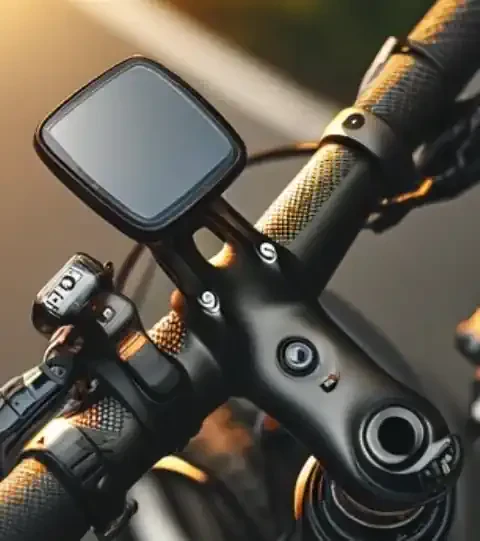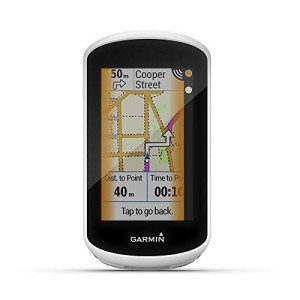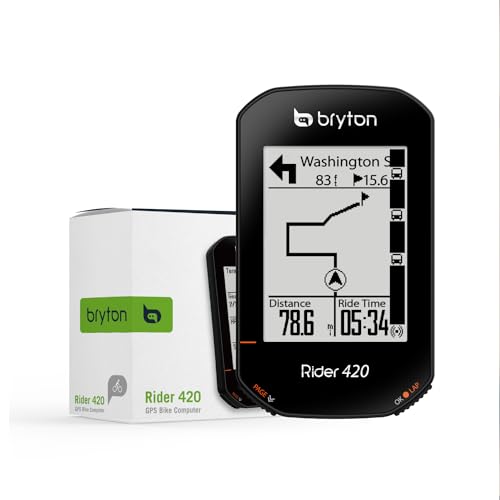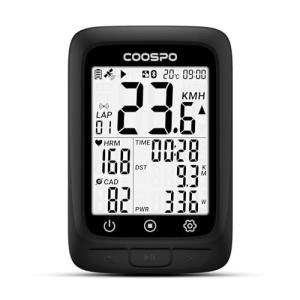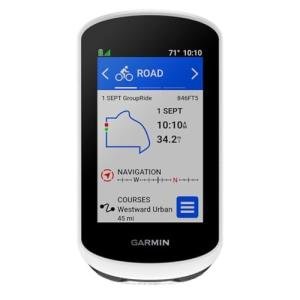Why Navigation Is Key for Every Cyclist
Embarking on a cycling adventure is an exhilarating experience, filled with the promise of fresh air, scenic landscapes, and the thrill of the open road (or trail). But amidst the excitement, there's one crucial aspect that can make or break your ride: navigation.
The Freedom of Exploration: Discovering New Routes and Adventures
Effective navigation empowers you to break free from familiar paths and venture into uncharted territory. With the right tools and skills, you can confidently explore hidden trails, discover scenic backroads, and uncover breathtaking vistas that you never knew existed. Navigation unlocks a world of possibilities, allowing you to create your own unique cycling adventures.
Safety First: Avoiding Getting Stranded or Lost in Unfamiliar Areas
Getting lost while cycling can quickly turn a fun outing into a stressful ordeal. Whether you're miles away from civilization or simply unsure of the way back home, the consequences of poor navigation can be significant. Having reliable navigation tools ensures your safety, giving you peace of mind and the ability to find your way back, no matter where your wheels take you.
Efficiency: Optimizing Your Rides and Reaching Destinations Faster
For many cyclists, time is of the essence. Whether you're commuting to work, training for a race, or simply trying to squeeze in a quick ride before sunset, efficient navigation is essential. By using the right tools and techniques, you can optimize your routes, avoid unnecessary detours, and reach your destinations faster, making the most of your valuable time on the bike.
The Joy of the Journey: Focusing on the Ride, Not on Finding Your Way
Cycling should be an enjoyable experience, not a constant struggle to find your way. With reliable navigation, you can shift your focus from map-reading to simply enjoying the ride. Immerse yourself in the scenery, connect with your surroundings, and let the joy of cycling take center stage, knowing that your navigation tools have you covered.
Lost in the Woods: A Personal Tale of Misadventure and Lessons Learned
I still vividly remember the time I set out on a mountain bike ride in a new area, armed with nothing but a vague sense of direction and an overinflated sense of confidence. Hours later, as the sun began to set and my water bottle ran dry, I found myself hopelessly lost in a maze of trails. It was a humbling experience that taught me the importance of proper navigation and the value of investing in reliable tools.
Essential Navigation Tools: Beyond the Smartphone
While your smartphone might seem like the obvious choice for navigation, the world of cycling offers a diverse array of tools specifically designed to enhance your experience on two wheels. These tools go beyond basic turn-by-turn directions, providing features tailored for cyclists of all levels and riding styles.
Bike Computers: GPS, Mapping, and More in One Device
Bike computers have evolved far beyond simple speedometers and odometers. Today's models are packed with features, often including built-in GPS, detailed mapping, route planning, performance tracking, and even connectivity with other devices like heart rate monitors and power meters. These compact and handlebar-mounted powerhouses are a popular choice for cyclists who want an all-in-one solution for navigation and ride data.
Some of the most popular brands for bike computers include Garmin, Wahoo, Hammerhead, and Lezyne. Each brand offers a range of models with varying features and price points, so you can choose the one that best suits your needs and budget. Whether you're a casual rider or a data-obsessed athlete, there's a bike computer out there that can elevate your cycling experience.
Dedicated GPS Devices: Rugged, Reliable Navigation for All Terrains
For adventurers and cyclists who frequently venture off the beaten path, dedicated GPS devices offer unparalleled reliability and durability. These devices are designed to withstand harsh weather conditions, bumpy terrain, and even the occasional tumble. They typically boast long battery life, extensive map coverage, and advanced navigation features like barometric altimeters and electronic compasses.
While dedicated GPS devices might be pricier than other options, their ruggedness and specialized features make them a worthwhile investment for cyclists who prioritize durability and off-road exploration. Brands like Garmin and Magellan are known for their robust GPS devices tailored for outdoor enthusiasts.
Smartphone Apps: Leveraging Technology for Route Planning and Tracking
For many cyclists, their smartphone serves as their primary navigation tool. A plethora of cycling apps are available, offering everything from turn-by-turn directions and offline maps to route planning, social sharing, and performance tracking. These apps leverage the power of your phone's GPS and cellular connection to provide a convenient and versatile navigation solution.
Popular cycling apps like Komoot, Strava, Ride with GPS, and komoot offer unique features and cater to different types of riders. Some apps excel at route planning and discovery, while others prioritize social features and performance analysis. Many apps also offer premium subscriptions with additional features like offline maps, voice navigation, and detailed training plans.
Maps: Traditional Navigation Still Holds Value for Cyclists
While technology has revolutionized navigation, traditional paper maps still hold a special place in the hearts of many cyclists. Maps offer a tangible connection to the landscape, allowing you to visualize your route and understand the terrain in a way that digital screens can't always replicate. They're also a reliable backup in case of technology failures or dead batteries.
Cycling-specific maps are often designed with cyclists in mind, featuring detailed information on bike routes, elevation profiles, points of interest, and even bike-friendly services like repair shops and cafes. Whether you use them as your primary navigation tool or as a backup, maps are an essential part of any cyclist's toolkit.
The Budget-Conscious Cyclist: Affordable Navigation Options
Navigation doesn't have to break the bank. There are plenty of affordable options available for cyclists on a budget. Consider using free or low-cost navigation apps on your smartphone, borrowing maps from your local library, or even joining group rides where experienced cyclists can guide the way. With a little creativity and resourcefulness, you can navigate your rides effectively without spending a fortune.
GPS Navigation for Cyclists: A Deep Dive
The Global Positioning System (GPS) has revolutionized the way we navigate, and cyclists have reaped the benefits of this technology in remarkable ways. Whether you're exploring new trails, commuting through city streets, or embarking on a multi-day bikepacking adventure, GPS navigation can be your trusty companion, guiding you safely and efficiently to your destination.
How GPS Works: Understanding Satellite-Based Navigation
At its core, GPS relies on a network of satellites orbiting the Earth. These satellites continuously transmit signals that contain precise time and location information. A GPS receiver, like the one in your bike computer or smartphone, picks up these signals and uses them to calculate its exact position on Earth. By comparing the signals from multiple satellites, the receiver can determine its latitude, longitude, altitude, and even speed and direction of travel.
Key Features to Look For in a Cycling GPS Device or App
When choosing a GPS device or app for cycling, there are several key features to consider:
Mapping: Detailed maps that are specific to cycling, including bike paths, trails, and points of interest, are essential. Look for maps that offer different views, such as topographic maps for off-road adventures and street maps for urban navigation.
Turn-by-turn directions: Clear and concise turn-by-turn directions are crucial for staying on course, especially on complex routes. Some devices offer voice guidance, which can be helpful when you need to keep your eyes on the road.
Route planning: The ability to create and customize routes is a valuable feature for cyclists who like to plan their rides in advance. Look for a device or app that allows you to import GPX files or create routes directly on the device.
Battery life: If you're planning long rides or multi-day adventures, battery life is a critical consideration. Choose a device or app that offers a long battery life or the ability to connect to an external power source.
Durability: Cycling can be a bumpy and unpredictable activity, so your GPS device or app should be able to withstand the elements. Look for devices that are water-resistant, dust-proof, and shock-resistant.
Additional features: Some GPS devices and apps offer additional features like live tracking, performance metrics, social sharing, and even emergency SOS capabilities. These features can enhance your cycling experience and provide peace of mind.
Preloaded Maps vs. Downloadable Maps: Pros and Cons
When it comes to maps, you'll typically have two options: preloaded maps that come with the device or downloadable maps that you can install later.
Preloaded maps: These maps are convenient because they're ready to use right out of the box. However, they may not always be up-to-date and may not cover every region you plan to ride in.
Downloadable maps: These maps offer more flexibility and allow you to choose which regions you want to download. However, they require additional storage space on your device and may require an internet connection to download.
The best option for you will depend on your individual needs and preferences. If you frequently ride in different regions, downloadable maps might be the better choice. However, if you primarily ride in a specific area, preloaded maps may be sufficient.
Turn-By-Turn Directions: Finding Your Way Even on Complex Routes
Turn-by-turn directions are a game-changer for cyclists, especially when navigating through unfamiliar areas or complex routes. These directions provide step-by-step guidance, telling you when and where to turn, how far to go, and even which lane to use. Some devices offer voice guidance, which can be helpful when you need to keep your eyes on the road or the trail.
Turn-by-turn directions are especially useful for cyclists who are new to an area or who are following a pre-planned route. They can help you avoid wrong turns, stay on track, and reach your destination safely and efficiently.
GPS for Gravel Grinders: Navigating Unpaved Adventures
Gravel riding has exploded in popularity in recent years, and GPS navigation has played a crucial role in enabling cyclists to explore off-the-beaten-path routes. Gravel-specific GPS devices and apps often feature detailed maps of unpaved roads and trails, as well as specialized features like route recalculation and elevation profiles. These tools empower gravel grinders to confidently navigate challenging terrain and discover hidden gems that are off-limits to traditional road bikes.
Smartphone Apps for Cyclists: Your Digital Co-Pilot
In the age of smartphones, cyclists have a powerful navigation tool right at their fingertips. A plethora of dedicated cycling apps offer features that go far beyond simple maps and directions, transforming your phone into a virtual co-pilot for your two-wheeled adventures.
Popular Cycling Apps: Komoot, Strava, Ride with GPS, and More
The app landscape for cyclists is vast and varied, with several standout options catering to different needs and preferences:
Komoot: This app excels at route planning and discovery, allowing you to create custom routes based on your preferred terrain, distance, and elevation. It also offers a vast library of user-generated routes and recommendations for points of interest along the way.
Strava: Known for its social features, Strava allows you to track your rides, compete with friends, and join challenges. It also offers route planning and navigation, making it a popular choice for cyclists who enjoy the competitive aspect of the sport.
Ride with GPS: This app is a favorite among bikepackers and long-distance cyclists, thanks to its robust route planning features and offline maps. It also offers turn-by-turn navigation, live tracking, and integration with other devices like bike computers.
Google Maps: While not specifically designed for cycling, Google Maps is a versatile tool that can be used for navigation on bike paths and roads. It offers turn-by-turn directions, real-time traffic updates, and the ability to search for bike-friendly businesses and services.
These are just a few of the many cycling apps available. The best app for you will depend on your individual needs and preferences. Consider factors like the type of cycling you do, the features you need, and your budget when choosing an app.
Features to Look For: Offline Maps, Route Planning, Social Sharing
When evaluating cycling apps, look for the following key features:
Offline Maps: This feature is essential for cyclists who venture off the beaten path or who don't have a reliable cellular connection. Offline maps allow you to access maps and navigation even when you're not connected to the internet.
Route Planning: The ability to create and customize routes is a valuable feature for cyclists who like to plan their rides in advance. Some apps offer advanced route planning tools that allow you to specify terrain, distance, elevation, and even points of interest along the way.
Social Sharing: If you enjoy sharing your rides with friends and family, look for an app that offers social sharing features. This allows you to share your routes, photos, and stats with others, and even compete on virtual leaderboards.
Turn-by-Turn Navigation: Clear and concise turn-by-turn directions are crucial for staying on course, especially on complex routes. Many cycling apps offer voice guidance, which can be helpful when you need to keep your eyes on the road.
Additional Features: Some apps offer additional features like live tracking, performance metrics, weather forecasts, and even integration with other devices like bike computers and heart rate monitors.
Safety Features: Live Tracking, Emergency Contacts, Accident Detection
Cycling safety is paramount, and many cycling apps offer features designed to enhance your safety on the road or trail.
Live Tracking: This feature allows friends and family to track your location in real time, providing peace of mind for both you and your loved ones.
Emergency Contacts: Some apps allow you to designate emergency contacts who will be notified in the event of an accident or emergency.
Accident Detection: Certain apps use your phone's sensors to detect accidents and automatically notify your emergency contacts if you don't respond.
Group Ride Tracking: This featureallows you to track the location of your fellow riders during a group ride, ensuring that no one gets left behind.
Integrating Apps with Other Devices: Syncing with Bike Computers and Wearables
Many cycling apps can be integrated with other devices, such as bike computers and wearables. This allows you to sync your ride data, routes, and other information across multiple devices, creating a seamless and comprehensive cycling experience.
For example, you can use a bike computer to record your ride data and then sync that data with your smartphone app to analyze your performance and share your ride with others. You can also use your smartphone app to create a route and then sync that route with your bike computer for turn-by-turn navigation.
Apps for the Urban Cyclist: Navigating City Streets with Ease
For urban cyclists, navigation apps can be a lifesaver, helping you navigate busy streets, find bike lanes, and avoid traffic congestion. Many apps offer features specifically designed for urban cycling, such as turn-by-turn directions that prioritize bike paths and lanes, real-time traffic updates, and even alerts for road hazards.
Some popular urban cycling apps include Bikemap, Citymapper, and Cyclers. These apps can help you plan your commute, discover new routes, and stay safe while cycling in the city.
Mapping Your Way: The Analog Approach
In a world dominated by digital screens and GPS signals, the humble paper map might seem like a relic of the past. However, for many cyclists, maps remain an indispensable tool for navigation, offering a unique blend of practicality, aesthetics, and a sense of adventure.
Choosing The Right Maps: Topographic, Cycling-Specific, or Regional
The world of maps is vast and varied, with different types catering to different needs and interests. For cyclists, there are three main categories to consider:
Topographic Maps: These maps provide detailed information about the terrain, including elevation, contours, and natural features. They're ideal for cyclists who venture off-road or who want a deeper understanding of the landscape they're riding through.
Cycling-Specific Maps: These maps are designed with cyclists in mind, featuring clearly marked bike routes, paths, and trails. They often include additional information like distance, elevation gain, and points of interest.
Regional Maps: These maps cover a specific geographic area, such as a state, county, or national park. They're a good option for cyclists who are exploring a new region and want a comprehensive overview of the area.
The best type of map for you will depend on your riding style and the terrain you'll be encountering. If you're planning a mountain bike adventure, a topographic map will be essential. For road cyclists, a cycling-specific map or regional map might be more suitable.
Map Reading Skills: Understanding Contours, Scales, and Symbols
While maps are incredibly useful, they're only effective if you know how to read them. Map reading skills are essential for any cyclist who wants to navigate confidently and safely.
Contours: These lines on a topographic map represent changes in elevation. Understanding contours allows you to visualize the terrain, identify hills and valleys, and plan your route accordingly.
Scales: The scale of a map tells you the relationship between distances on the map and distances in the real world. Knowing how to use a scale is crucial for estimating distances and planning your ride.
Symbols: Maps use a variety of symbols to represent different features, such as roads, trails, water bodies, and points of interest. Learning to interpret these symbols is essential for understanding your map and navigating effectively.
Waterproofing and Carrying Maps: Tips for On-Bike Storage
Maps can be delicate, so it's important to protect them from the elements. Waterproofing your maps is a simple process that can save you from a soggy mess in the event of rain or a spill. You can buy waterproof map cases or use a simple DIY method like laminating your maps or sealing them in plastic bags.
Carrying maps on your bike can be tricky, but there are several options available. You can use a handlebar bag, frame bag, or even a simple ziplock bag to store your maps. Make sure your maps are easily accessible so you can consult them on the go.
Using Maps in Conjunction with Technology: A Hybrid Approach
While maps and technology can be used independently, they can also be used together to create a powerful navigation system. For example, you can use a GPS device or app to track your progress and then use a map to get a broader perspective of the terrain and surrounding area. This hybrid approach combines the best of both worlds, offering the precision of technology and the visual appeal of a map.
The Allure of Analog: Why Some Cyclists Prefer Maps Over Gadgets
In an era of digital everything, why do some cyclists still prefer paper maps? For many, it's about the tactile experience of unfolding a map, tracing their route with a finger, and feeling a connection to the landscape. Maps also offer a sense of nostalgia and adventure, harking back to a time when navigation was a more hands-on endeavor.
Moreover, maps can be a valuable learning tool, forcing you to engage with the terrain and develop your navigational skills. Unlike GPS devices, which often do the thinking for you, maps require you to interpret information, make decisions, and rely on your own instincts. This can be a rewarding experience, fostering a deeper understanding of the landscape and a greater sense of self-reliance.
Mastering the Compass: Navigation Beyond Technology
In an era where GPS devices and smartphone apps reign supreme, the age-old compass might seem like a quaint relic of the past. However, for the discerning cyclist, a compass remains an indispensable tool, offering a reliable backup when technology falters and a deeper connection to the art of navigation.
Basic Compass Skills: Understanding Declination and Bearings
Before you can navigate with a compass, it's crucial to grasp a few fundamental concepts:
Declination: The Earth's magnetic north pole isn't perfectly aligned with true north. The difference between these two points is called declination, and it varies depending on your location. To navigate accurately, you need to adjust your compass for declination. You can find your local declination online or using a declination calculator.
Bearings: A bearing is the direction of travel expressed in degrees from north. For example, a bearing of 90 degrees means you're traveling due east. To use a compass, you'll need to be able to take bearings from your map and follow them in the field.
Orienting a Map with a Compass: Finding Your True North
One of the most fundamental compass skills is orienting a map, which means aligning it with the actual terrain you're in. This involves using your compass to find true north and then rotating the map so that the north arrow on the map points in the same direction as your compass needle. Once your map is oriented, you can easily determine your location and plan your route.
Navigating by Terrain: Using Landmarks and Natural Features
While a compass can give you a precise bearing, it's important to be able to navigate by terrain as well. This involves using landmarks, natural features, and even the sun and stars to help you find your way. For example, you can use a river to follow a general direction, a mountain peak to confirm your location, or the position of the sun to estimate your heading.
The Role of the Compass in Emergency Situations: When Tech Fails
While GPS devices and apps are incredibly convenient, they're not infallible. Batteries can die, signals can be lost, and devices can malfunction. In these situations, a compass can be a lifesaver. Knowing how to use a compass can help you find your way back to civilization even when technology fails.
The Compass and the Cyclist: A Historical Bond
The compass has a long and storied history in navigation, dating back centuries to the earliest explorers and adventurers. Cyclists, too, have relied on compasses for decades, using them to navigate long-distance tours, off-road expeditions, and even daily commutes. While technology has changed the way we navigate, the compass remains a symbol of self-reliance, resourcefulness, and the enduring spirit of exploration.
Route Planning and Preparation: Setting Yourself Up for Success
While having the right navigation tools is essential, proper route planning and preparation can significantly enhance your cycling experience. A well-planned route ensures you're not only heading in the right direction but also that you're prepared for the challenges and opportunities that lie ahead.
Researching Your Ride: Terrain, Distance, Elevation, and Points of Interest
Before you embark on any cycling adventure, it's crucial to research your route thoroughly. Understanding the terrain, distance, elevation gain, and potential points of interest will help you make informed decisions about your gear, pace, and overall strategy.
Terrain: Are you riding on paved roads, gravel paths, or singletrack trails? Knowing the terrain will help you choose the right bike and tires, as well as prepare for any technical challenges you might encounter.
Distance: How far are you planning to ride? Estimating the distance will help you determine how much food and water you'll need, as well as how long the ride will take.
Elevation: If you're riding in hilly or mountainous terrain, it's important to understand the elevation gain of your route. This will help you gauge the difficulty of the ride and prepare for any challenging climbs.
Points of Interest: Are there any scenic viewpoints, historical landmarks, or other attractions along your route? Researching points of interest can add another dimension to your ride, turning it into a journey of discovery.
Creating a Route: Using Online Tools, Apps, or Paper Maps
Once you've researched your ride, it's time to create a route. There are several ways to do this, depending on your preferences and the tools available to you.
Online Tools: Websites like Ride with GPS, Komoot, and Strava offer powerful route planning tools that allow you to create custom routes based on your desired criteria. You can also search for and download routes created by other users.
Apps: Many cycling apps, such as those mentioned earlier, also offer route planning features. These apps often allow you to create routes on the go, making them convenient for spontaneous adventures.
Paper Maps: If you prefer a more traditional approach, you can use paper maps to plot your route. This can be a rewarding experience, as it forces you to engage with the landscape and develop your map-reading skills.
Sharing Your Route: Safety Considerations for Solo Rides
If you're riding solo, it's a good idea to share your route with a friend or family member. This way, someone knows where you are and when to expect you back. You can share your route via text message, email, or through a social media platform. Some cycling apps also offer live tracking features that allow others to follow your progress in real time.
Weather and Road Conditions: Planning for the Unexpected
Before you head out on your ride, check the weather forecast and road conditions. Be prepared for rain, wind, or other adverse weather conditions by packing appropriate clothing and gear. If you're riding on roads, be aware of any construction zones, detours, or other hazards.
It's also a good idea to have a backup plan in case of unexpected circumstances. For example, if the weather takes a turn for the worse, you might need to shorten your route or find an alternate route. If you get a flat tire, you'll need to know how to fix it or have a way to get help.
The Power of Community: Learning from Experienced Cyclists
One of the best ways to improve your route planning and navigation skills is to learn from experienced cyclists. Join a local cycling club or group, or connect with other cyclists online. Experienced riders can offer valuable insights and tips on everything from choosing the right routes to navigating challenging terrain. They can also help you troubleshoot any problems you encounter along the way.
Embrace the Adventure, But Never Get Lost
As we've explored, the world of cycling navigation is rich and diverse, offering a variety of tools and techniques to suit every rider's needs and preferences. From high-tech GPS devices to traditional paper maps, the options are endless. But no matter which tools you choose, the goal remains the same: to empower you to explore confidently, discover new routes, and never get lost on your two-wheeled adventures.
Recap of Essential Navigation Tools
Let's recap the essential navigation tools we've covered:
Bike Computers: All-in-one devices that combine GPS, mapping, and performance tracking.
Dedicated GPS Devices: Rugged and reliable navigation for off-road adventures.
Smartphone Apps: Versatile tools for route planning, tracking, and social sharing.
Maps: Traditional navigation with a tactile and visual appeal.
Compasses: A reliable backup when technology fails and a connection to the art of navigation.
Confidence: The Key to Enjoying Every Ride
With the right navigation tools and skills, you can approach every ride with confidence, knowing that you have the knowledge and resources to find your way, no matter where the road (or trail) may lead. This confidence allows you to focus on the joy of cycling, immersing yourself in the scenery, challenging yourself on new terrain, and creating lasting memories.
Encouragement: Explore New Places and Discover Hidden Gems
Don't be afraid to venture off the beaten path. With reliable navigation, you can explore new places, discover hidden gems, and create your own unique cycling adventures. Whether it's a local trail you've never ridden before or a cross-country bikepacking expedition, navigation empowers you to push your boundaries and experience the world from a new perspective.
Responsibility: Always Be Prepared for the Unexpected
While navigation tools can be incredibly helpful, it's important to remember that they're not foolproof. Batteries can die, signals can be lost, and maps can be misread. That's why it's crucial to always be prepared for the unexpected. Carry a backup battery, a spare map, or even a compass as a last resort. Let someone know your route and expected return time. And most importantly, trust your instincts and don't be afraid to turn back if you're unsure of your way.
A Cyclist's Guide to Bikepacking Navigation
For cyclists who crave multi-day adventures, bikepacking offers a unique blend of self-sufficiency, exploration, and immersion in nature. Navigation becomes even more critical on bikepacking trips, as you'll often be venturing into remote areas with limited access to resources. Here are some additional tips for navigating on bikepacking adventures:
Offline Maps: Download detailed offline maps of your route and surrounding areas. This will ensure that you have access to navigation even when you're out of cell service range.
Route Planning: Carefully plan your route, taking into account distance, elevation gain, water sources, and potential campsites.
Charging Devices: Bring a portable charger or solar panel to keep your GPS devices and smartphone charged.
Compass and Map Skills: Familiarize yourself with basic compass and map reading skills as a backup in case your technology fails.
Leave No Trace: Practice Leave No Trace principles to minimize your impact on the environment.
By following these tips and utilizing the navigation tools and techniques we've discussed, you can confidently embark on bikepacking adventures and create unforgettable experiences in the great outdoors.
